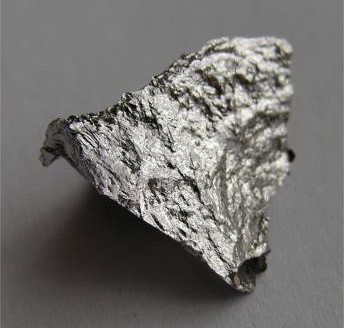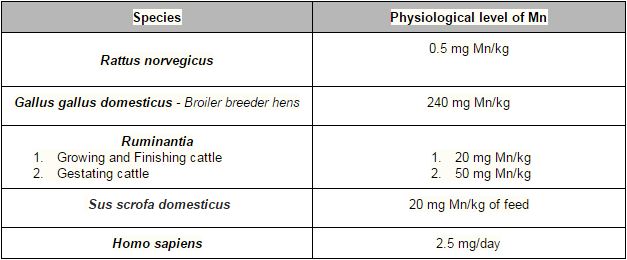|
Size: 2750
Comment:
|
Size: 2956
Comment:
|
| Deletions are marked like this. | Additions are marked like this. |
| Line 40: | Line 40: |
| ==Typical manganese levels in different species== ||<tablebgcolor="#eeeeee" tablestyle="float:center;font-size:0.85em;margin:0 0 0 0; "style="padding:0.5em; ;text-align:center"> {{attachment:Table.jpg.png|pop-up text}} <<BR>>'''Fig 5.'''<<BR>>''Table of typical Mn levels for each species'' || {{TOC}} |
|
| Line 41: | Line 44: |
| {| ! Species ! Physiological level of Mn |- | Rattus norvegicus || 0.5 mg Mn/kg |} |
|
| Line 48: | Line 45: |
| {{TOC}} |
Effects of Manganese on the Hypothalamic Regulation of Reproduction
Martina Azzopardi, Ashli Welcome, Clare Wilson
Introduction

The hypothalamus is a portion of the brain consisting of a number of small nuclei with a variety of functions; most importantly, it provides a link between the nervous system and endocrine system via the hypophysis. Manganese is a naturally-occurring metal required for normal mammalian reproductive function. It is able to cross the blood-brain barrier and accumulate in the hypothalamus, where it exerts its effect. It does so through several carriers in different oxidation states, specifically via:
* Divalent metal transporter 1 (DMT1)
* Transferrin receptors (TfR)
* Divalent metal/bicarbonate ion symporters ZIP8 and ZIP14
* Various calcium channels
* Solute carrier-39 (SLC39) family of zinc transporters
* Park9/ATP13A2 * Magnesium transporter hip14
* Transient receptor potential melastatin 7 (TRPM7) channels/transporters
* Homomeric purine receptors (P2X and P2Y)
* Citrate transporter.
|
Manganese is able to directly influence neuroendocrine effect related to reproduction. Manganese crosses the blood-brain barrier more effectively, and is eliminated with greater difficulty, in younger animals; subsequently, it can exert its effect in the developing reproductive system readily. Hormones released by the hypothalamus are directly affected: namely, direct stimulation of the secretion of gonadotropin releasing hormone (GnRH). GnRH is a neuropeptide molecule (comprised of 10 amino acids) which is produced by the parvocellular cells of the hypothalamus. GnRH is an integral component of reproductive development through its direct stimulation of the production and secretion of gonadotropin hormones by hypophyseal cells: specifically, follicle stimulating hormone (FSH) and luteinizing hormone (LH). Both FSH and LH are essential for sexual maturation and typical reproductive processes.
==Typical manganese levels in different species==
|
==1 Introduction== ==2 Physiological role of manganese in reproduction== ==3 Table of typical Mn levels for each species== ==4 Pathogenicity: a summary of the effects of manganese in reproduction== ==5 Species-specific effects of manganese== ===Rodents - Rattus norvegicus=== ===Broilers - Gallus gallus domesticus=== ===

